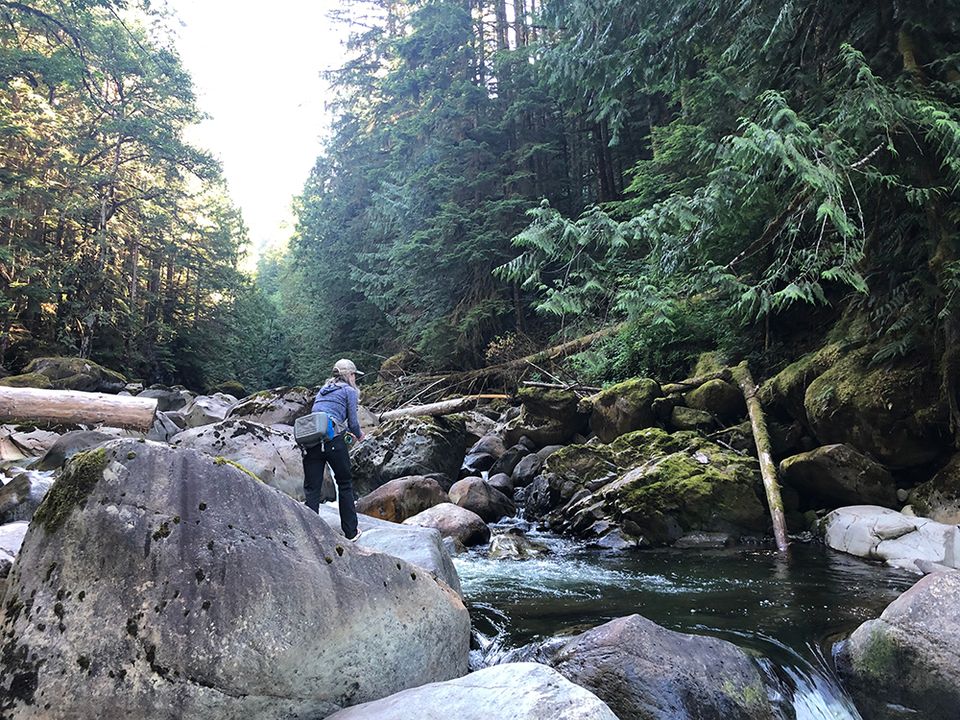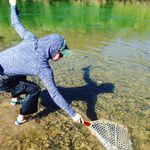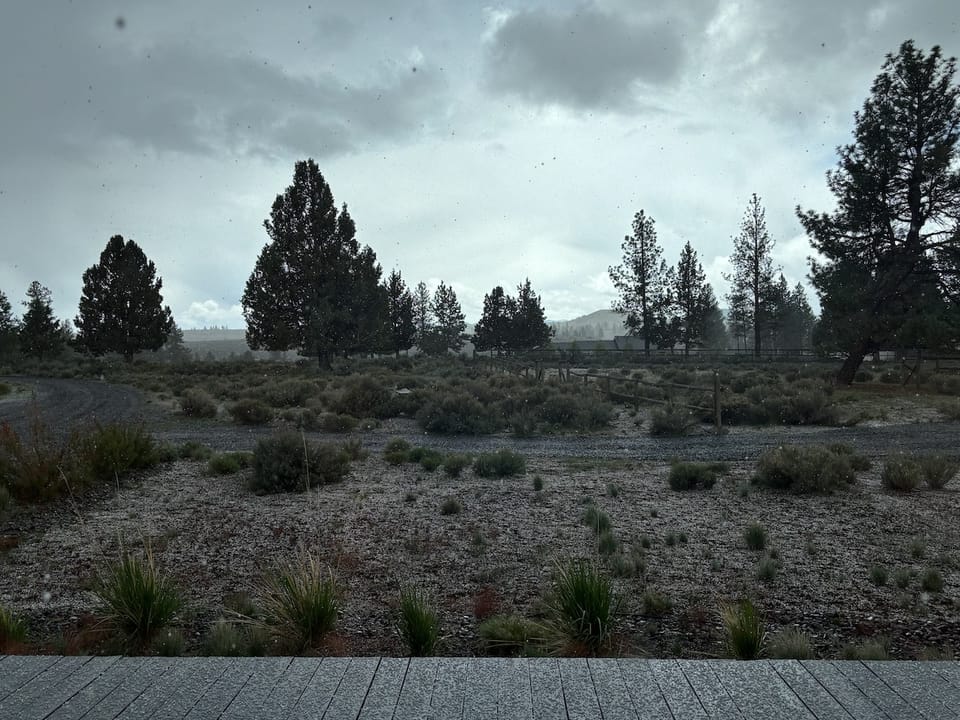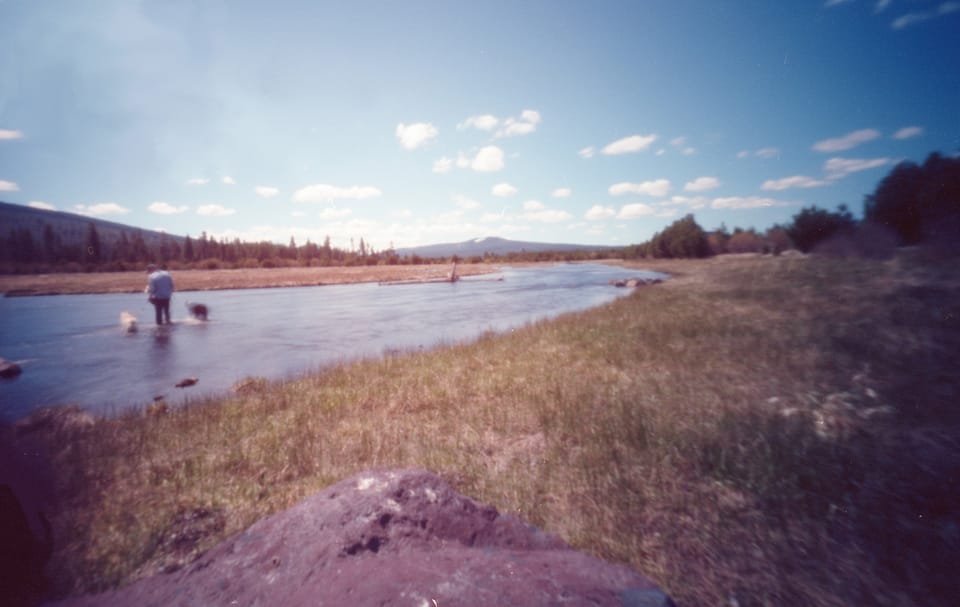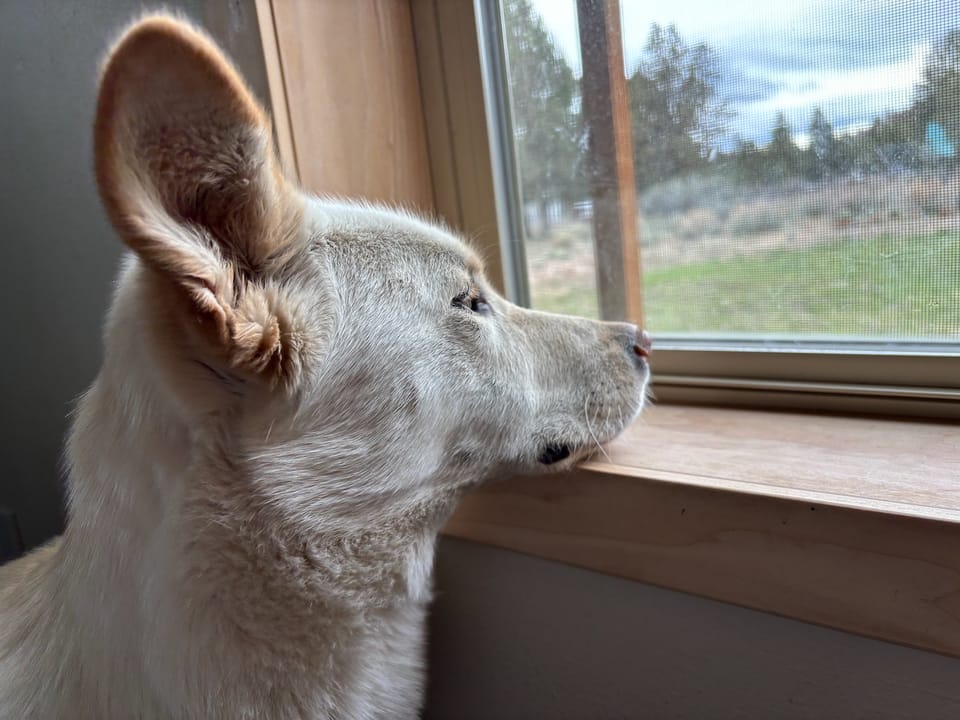The summer of 2020 has pushed people to be outside. This is great! People should spend more time outside. For those of us who crave solitude in the outdoors, however, we have to be even more crafty and adventurous to satisfy that itch.
Luckily, RK and I have maps and atlases, 4WD, and a pretty good sense of curiosity. Also, we really like creeking. Fly shops in Central Oregon will send prospective trout fishers to the Crooked River, the Deschutes River, and maybe the Fall River. The intrepid will try their casting skills on the Metolius, a river known for wary fish. Mountain lakes and reservoirs probably hold large amounts of fish, if you have the skills and patience for still water. Ultimately, though, this is the land of Steelhead fishing — long days of swinging big rods in big rivers and hoping to catch some big fish. Few people even consider fishing smaller rivers and creeks — the fish are small (if there are any fish), the access is tricky, casting and wading can be hazardous.

There is little to no information on fly fishing small water around Central Oregon but there are dozens of creeks. A day’s adventure can easily leave you with no fish, legs scratched by wild roses and willows, and a dog with a belly full of dead beaver. Sometimes, though, you meet a friendly person on a pullout off the road who has the same passion for wild fish and solitude. They may share some tips for creeks with fun fishing, sending you on yet another adventure to find an obscure road crossing and maybe a new place to fish.
Creeking keeps us from getting lazy and complacent. It helps us map the geography of an area that is still fairly new to us. The fish that live in mountain creeks are wild, uneducated, and hungry. If you embrace creeking, you will learn a lot about where fish live, how water moves through a landscape, when wildflowers bloom, and how to find solitude outdoors during an unusually weird summer.
Between the gnarly pandemic and increasing anti-tourism sentiment, canceling our two-week fly fishing road trip seemed prudent, but we did manage a shorter excursion up to western Washington. This landscape is even trickier for creeking. The rivers flow white with glacial runoff and the undergrowth is dense — real dense — with thorny (though sometimes fruitful) berry vines. And while you don’t need much sunscreen, be prepared for bugs.
On the North Fork of the Nooksack River, we found a tempting creek that offered one nice fish where it joined the river. The creek was beautiful — deep pools, cold water, tall, arching cedars offering shade. As we ventured into the rocky green cave, however, we were accosted by hordes of hungry biting flies. I summoned my inner zen for a hundred or so feet up the creek, but when the fish weren’t immediately interested, we retreated to the milky Nooksack. We caught no more fish, but the open rocky beach provided easy casting practice with amazing views of Mt. Baker.

We had better success off the Middle Fork of the Nooksack, on a spectacular creek of giant boulders, deep pools, and beautiful little rainbows. Each scramble over a massive boulder revealed another pool, more fish, and more opportunities for creative casting. That place was hard to leave, except for the unsettling campsite we found on the far side of the river.

I’m not telling anyone where to go creeking… unless maybe I meet you in a meadow somewhere, and I can tell you enjoy it as much as I do. Half the fun is reading the maps, finding access, and feeling like you are the only person to be on a small bit of water recently. I do have one request for those getting outside who may be newer to outdoor adventuring: practice respect and empathy. Remember that fish are alive and we really want little fish to grow up to be big fish. Keep fish wet, release them gently into flowing water, smash the barbs on your hooks, learn how to use slack on your line for self-release so you don’t even have to handle them. Consider if you really need a photo with the fish you caught. And most of all, use discretion when describing or sharing any beautiful place you visit or it won’t be a refuge for long.


